Occupational Safety Training for Directors
99,000 ₫
Note: The above price is calculated for one person, and the price may fluctuate depending on the number of learners participating in the course and market movements. For more accurate pricing support, please refer to the price list or contact our consulting staff directly.
The Safety Training Course for Directors is a course that equips knowledge of group 3 occupational safety. The course will enhance learners’ awareness of how to prevent workplace accidents during the manufacturing process. Accordingly, occupational safety training content is closely aligned with Article 18 Decree 44/2016/ND-CP.
Table of Contents
Toggle1. Overview of Director
a. The important role of Director, Deputy Director and General Director
The role of the Director in an organization is very important and diverse, and it can vary depending on the type of company, size, industry, and the specific goals of that organization. Below are some important roles of the Director:
- Strategic leadership: The Director is responsible for defining and guiding the organization’s strategy. They must have an overall vision of the future and develop plans to achieve the company’s goals. The Director must also ensure that strategic decisions are implemented and monitored effectively.
- Human resources management: The Director is responsible for managing and developing the employee team. This includes recruitment, training, performance evaluation, and skill development for employees. The Director needs to establish a positive and motivating working environment that can retain talented employees.
- Financial management: The Director must manage the company’s finances to ensure stability and success. This includes building financial resources, budgeting, monitoring income and expenses, managing financial risks, and reporting on financial performance to the leadership and shareholders.
- Relations with customers and partners: The Director often represents the company in transactions with customers, partners, and government agencies. They must build and maintain close relationships to ensure customer satisfaction and facilitate business cooperation.
- Organizational culture orientation: The Director plays an important role in building and maintaining a positive and ethical organizational culture.

b. Director in different industries
Directors in different industries have specific responsibilities and roles suitable for that industry. Below are some examples of the roles of Directors in some common industries:
- Chief Executive Officer (CEO): In every industry, the CEO plays the most important role in leading the organization, defining the organization’s strategy, and shaping long-term direction. They are also responsible for managing all aspects of business operations, including finance, human resources, manufacturing, and marketing.
- Chief Technology Officer (CTO): In the information technology industry and technology companies, the CTO is responsible for leading and managing technical operations. They shape and implement technology strategies, supervise product development, and ensure the quality and reliability of technology products.
- Chief Financial Officer (CFO): In the financial sector, the CFO is responsible for managing the company’s financial activities. They play an important role in financial planning, capital and asset management, monitoring financial risk management, and financial reporting to stakeholders.
- Chief Marketing Officer (CMO): In the field of marketing and advertising, the CMO is responsible for building and implementing marketing strategies, developing brands, conducting market research, promoting products or services, and managing customer relations.
- Chief Operating Officer (COO): In the manufacturing sector, the COO takes on the role of managing and operating manufacturing activities. They ensure the manufacturing process runs efficiently, manage resources, and control quality.

2. Overview of safety training course for Director
a. What is occupational safety training for Director?
- Occupational safety training for Directors are classes that provide awareness of accident prevention for workers. Accordingly, Directors belong to group 1.
- The occupational safety training course will help workers identify and avoid hazards, reducing the risks of occupational accidents during work.
REGISTER FOR OCCUPATIONAL SAFETY TRAINING SERVICE
b. Training duration
i. Initial group 1 safety training duration
- Total training duration is at least 16 hours, including examination time.
- 8 hours of theory on safety and occupational hygiene policies and laws
- 7 hours of theory on occupational safety and hygiene professional skills
- 1 hour of final theory test at the end of the training course
The safety training center will arrange the schedule into several sessions depending on the Director’s availability. However, in general, there will be 4 training sessions for group 1, with 2 sessions per day, provided that the manufacturing enterprise can arrange continuous study time.
ii. Periodic group 1 safety training duration
Before the occupational safety training certificate expires, if workers want to renew it, they must attend a periodic occupational safety training course, with a periodic safety training duration equal to at least 50% of the initial safety training duration.
This means that the total periodic group 1 training duration is at least 8 hours, including examination time. After completing the periodic training course and passing the test, workers will be reissued and extended with the group 1 occupational safety training certificate.
c. Content of the training course
| No. | TRAINING CONTENT | TRAINING DURATION (HOURS) | |||
| Total | Including | ||||
| Theory | Practice | Test | |||
| I | System of policies, laws on occupational safety and hygiene | 8 | 8 | 0 | 0 |
| 1 | Overview of the system of legal documents on occupational safety and hygiene. | 6 | 6 | ||
| 2 | System of standards and technical regulations on occupational safety and hygiene. | 1 | 1 | ||
| 3 | Specific regulations of state management agencies on occupational safety and hygiene when constructing, expanding, or renovating works, facilities for manufacturing, using, storing, and testing machines, equipment, materials, and substances with strict requirements on occupational safety and hygiene. | 1 | 1 | ||
| II | Professional skills in occupational safety and hygiene | 7 | 7 | 0 | 0 |
| 1 | Organizing apparatus, managing, and implementing occupational safety and hygiene regulations at the facility; assigning responsibilities and delegating authority on occupational safety and hygiene work. | 1 | 1 | ||
| 2 | Basic knowledge of hazardous and harmful factors and preventive measures. | 4 | 4 | ||
| 3 | Methods of improving working conditions. | 1 | 1 | ||
| 4 | Safety culture in manufacturing and business. | 1 | 1 | ||
| III | Testing the training content at the end of the training course | 1 | 1 | 0 | |
| Total | 16 | 16 | |||
See more training content of 6 groups
d. Group 1 occupational safety training documents
After completing the group 1 occupational safety training course and passing the test, workers will be issued an occupational safety certificate along with a complete set of documents related to the group 1 occupational safety training course
- Training contract
- Value-added tax invoice
- Decision on opening the occupational safety and hygiene training course
- Attendance list
- List of trainees completing the training course
- Decision on recognition of training results
- Book of issuing occupational safety and hygiene training certificates
- Occupational safety and hygiene training certificate
The occupational safety training certificate will clearly show information such as: full name, gender, date of birth, nationality, identification number or citizen ID, job title, and working unit. It also includes training duration, red stamp, and the signature confirming completion of the training course by the General Director of An Toan Nam Viet Occupational Safety Training and Environment Monitoring Company Limited.


3. Hazards that Directors are often exposed to
Directors are often exposed to several hazards that can affect their health. Below are some common hazards that Directors may face:
- Stress and tension: Directors often face high work pressure, team management, and ensuring organizational success. Work-related tension and stress can affect both the psychological and physical health of Directors.
- Overwork: Senior management roles require Directors to work long hours and exert great effort. Prolonged overwork can lead to fatigue, exhaustion, sleep deprivation, and affect overall health.
- Work pressure: Directors must deal with high pressure to achieve business results, meet financial goals, manage employees, and solve difficult problems. Work pressure can cause stress, anxiety, and affect mental health.
- Exposure to toxic substances: Depending on the specific industry, Directors may be exposed to hazardous substances such as chemicals, toxic gases, or other harmful environmental factors. Lack of occupational safety and risk management can pose health risks to Directors.
- Lifestyle-related diseases: Management roles may require Directors to work in stressful environments, lack time for exercise, unhealthy diet, and little rest. This may lead to risks of lifestyle-related diseases such as cardiovascular disease, obesity, and stress.

4. Safety measures for Directors
To ensure health safety, Directors can apply the following measures to avoid hazards:
- Time and work management: Create a reasonable work schedule, ensure time for adequate sleep, rest, and relaxation. Prioritize important tasks and set priorities to avoid work overload.
- Build a reliable team: Delegate work and divide responsibilities among the team, building a reliable and self-managing team. This helps reduce pressure and increase the ability to handle management tasks.
- Invest in personal development: Spend time practicing and developing management skills. This helps improve problem-solving ability, stress management, and coping with work pressure.
- Implement occupational safety: Ensure compliance with occupational safety regulations and make sure that facilities, equipment, and the work environment meet safety standards. Train employees on occupational safety and establish procedures to handle emergencies.
- Promote a healthy lifestyle: Set goals and maintain a healthy lifestyle by exercising regularly, eating a balanced diet, and taking care of mental health. Build self-care habits to reduce stress and improve overall health.
- Build a support network: Seek support from family, friends, colleagues, or find a consultant to share and discuss work pressure and stress.
- Periodically organize occupational environment monitoring at the office, collect and analyze harmful factors for employees, thereby adjusting and reducing hazards to prevent occupational diseases for them.
5. Salary and benefits of Directors
The salary and benefits of Directors depend on many factors, including the size and type of organization, industry, position, experience, and achievements of the Director, as well as geographical location and labor market. Below are some common factors related to the salary and benefits of Directors:
- Fixed salary: Directors are usually paid a fixed monthly or annual salary. This amount usually reflects the high responsibilities and managerial role of the Director.
- Bonuses and rewards: Directors may receive bonuses and rewards based on individual and organizational performance. These can be cash bonuses, shares, profit percentages, or other forms.
- Stock and profit packages: In some cases, Directors may be offered stock packages or reward stock programs, allowing them to own part of the company’s equity and share in the profits.
- Benefits and insurance: Directors are usually provided with benefits and insurance such as health insurance, life insurance, accident insurance, pensions, leave, and other programs to protect health and personal welfare.
- Salary increase and promotion opportunities: Directors may be offered annual or periodic salary increases, depending on their performance and contributions. They may also have opportunities for promotion within the organization to higher managerial positions.
It should be noted that the salary and benefits of Directors may vary depending on the decisions of the leadership board and the company’s board of directors, as well as competition in the labor market and general economic conditions.
6. Benefits of occupational safety training
An Toan Nam Viet provides your Business with excellent benefits after completing occupational safety training courses in accordance with Decree 44/2016/ND – CP on occupational safety and hygiene for companies, factories, and enterprises.
- Employees can recognize potential risks of occupational accidents and take preventive measures to avoid accidents.
- Your Business can establish risk prevention measures in the manufacturing, operation, and maintenance process.
- Minimize costs when safety risks occur at work.
- Uninterrupted production processes help increase labor productivity and product quality.
- Comply with occupational safety laws and avoid legal risks.
- Create reputation and professionalism in all aspects, thereby enhancing the brand of your Business.
The training courses of Nam Viet are solutions to prevent and resist external factors affecting individuals so that they can avoid dangers that may lead to injuries or even fatalities.
REGISTER FOR OCCUPATIONAL SAFETY TRAINING SERVICE
7. Customer feedback after completing the training course
An Toan Nam Viet has many years of experience in the mission of accompanying many businesses in Vietnam in general and in the southern provinces in particular. That responsibility for Nam Viet is extremely precious, which is why Nam Viet’s Occupational Safety Training is always increasingly professional. The driving force for An Toan Nam Viet to grow strongly until now comes from both positive feedback and suggestions from businesses. Below are the feedbacks from our partners we have served.
Bac Nam E&C Construction Investment Joint Stock Company
“The first time using services at An Toan Nam Viet I was very surprised by the enthusiastic 24/7 support of the consulting team. The class organization was very quick and convenient for our company, thank you very much for Nam Viet’s service!”
Hoa Dat Construction and Trading Joint Stock Company
“Nam Viet’s service has helped us a lot in simplifying occupational safety and completing safety documents for the working process. The consulting team is enthusiastic and timely in answering our questions. 5 stars for Nam Viet.”
See more customer interviews after using the service of An Toan Nam Viet
8. Occupational Safety Training Capacity of An Toan Nam Viet
An Toan Nam Viet is a reputable and quality occupational safety training center in Vietnam today. With occupational safety training sessions held continuously at manufacturing workshops, factories, or construction sites nationwide (63 provinces in Vietnam).
REGISTER FOR OCCUPATIONAL SAFETY TRAINING SERVICE
Occupational safety training license
- An Toan Nam Viet has been inspected and granted a certificate of eligibility for occupational safety and hygiene training by the Department of Safety under the Ministry of Labor – Invalids and Social Affairs. This further strengthens our occupational safety training capacity.

Documents and lectures
- Before occupational safety training materials are included in the OSHE training courses, they are reviewed and approved to ensure that lectures are always accurate in knowledge and effective in practice.
- The teaching methods of the instructors are standardized according to the teaching standards of An Toan Nam Viet, which have been researched and summarized by experts in occupational safety and hygiene training to bring the highest knowledge acquisition efficiency to learners.
Facilities
- Controlling classroom factors that affect training will increase teaching efficiency and learners’ knowledge acquisition.
- Training support facilities of our center always arrange spacious classrooms that meet standards of area, lighting, training equipment, etc.
9. Nationwide reputable and quality occupational safety training center
At An Toan Nam Viet, we always put occupational safety training dedication as a top priority. For us, imparting knowledge of self-protection for Directors so that they can have safety in their livelihood journey is contributing to building the country.
To ensure effective training, we carefully and meticulously prepare every small detail. From preparing tools, teaching equipment to curriculum, documents, sound, and lighting.
Our occupational safety trainers are experts with many years of experience in the field. They even have research projects on identifying hazards in all industries and how to prevent them.
Lectures from trainers are summarized from practice and conveyed vividly and easily understood by employees. These factors help employees feel comfortable during study time and absorb our teaching well. Of course, the conveyed knowledge always adheres to Decree 44/2016/ND-CP.
From there, they gain many preventive measures against dangers and ways to protect themselves. At the same time, they can apply them most appropriately in actual work.
Our safety training center is proud to provide reputable and professional occupational safety training services with the following advantages:
- Competitive training costs but training quality is still ensured.
- Flexible training schedules to fit with company production.
- Quick occupational safety training certification procedures, in accordance with the law.
- Trainers are highly experienced professionals.
- Classrooms are controlled for factors affecting training, increasing teaching efficiency and knowledge absorption of learners.
- Lectures are compiled in accordance with occupational safety work at enterprises.
- An Toan Nam Viet works dedicatedly and professionally to support customers accurately and quickly.

10. Refer to more occupational safety training documents
1 review for Occupational Safety Training for Directors
No comments yet

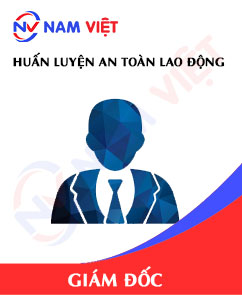

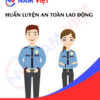



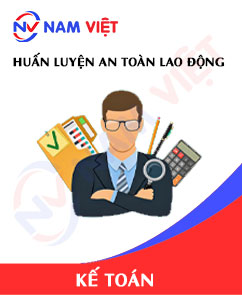
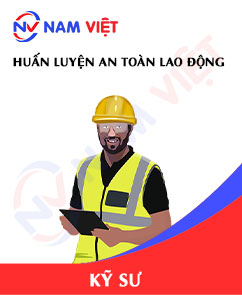
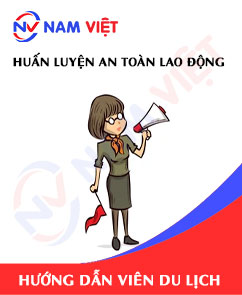

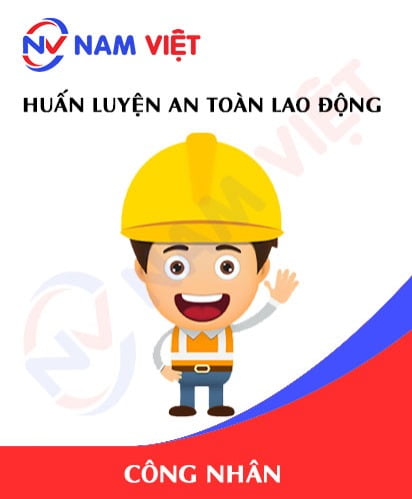


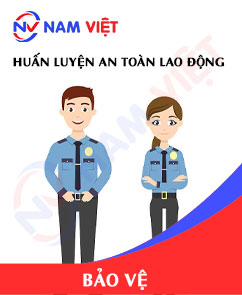
caotiensyhung.07081999
Giảng viên dạy rất sinh động dễ hiểu!